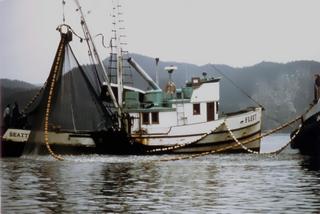
A humor based mass media campaign backed by the Bay (Chesepeake) Program that urged people to “save the crabs…then eat ’em” successfully raised local awareness about the Bay while drawing notice from across the country. The point is that this kind of approach works better than the straight-laced, "do the right thing" kind of approach.
What kind of approach is your seafood campaign, or advertising ditties? There's a lot of psychology involved that even professionals have a hard time wrapping their minds around. But we know people respond to humor and to analogies.
People are bombarded by about 2000 advertisements a day, so the experts say. I didn't make that up. So, in consequence, many consumers of the age group that might buy seafood are consciously avoiding exposure to adverdising. I mean, how much can you take before your circuits overload. Consumers that make wise, healthy choices, like buying wild seafood over farmed raised seafood, might be avoiding ads that don't have a "feel good" quality about them.
Take that to another level. How about ads that have social redeeming qualities? And then how about ads that people will actually seek out because they make them feel so good. Is that too far out? Check this out: Mom and dad meet over dinner to sign the divorce papers, but after sampling the salmon baked on a cedar plank, they tear up the papers and walk off arm in arm.
Well, maybe not, but I'd be willing to bet that anything that smacks of fun, is going to get a good response. Not to say that sex isn't fun, and sells products, but it's highly overrated as a change agent. Even the latest buzz about consumers wanting to know all about the fishermen who caught the fish might not be based on much.
What's a consumer or restaurant going to do when he sees streaming videos on fifteen web sites all showing fish swimming wild and then into the fishing gear of Al, Bjorn, Nick, Harry Jr., etc. Maybe buying behavior will be based on how cute their kids are holding up a fish on the deck of their boat, but I doubt it.
The only other thing I wanted to say today is that the fishing season is winding down for the summer in Alaska and my readers there now at least equal the West Coast readers. Hopefully Alaska fishermen will start doing their homework, but at least one fisherman up there doubts it. Of course fishermen are real skeptics anyway.
I travelled all over Alaska for the state government, which led to my writing the Small Processors Association white paper. But I got some of that "John's here from the government to help us, yeah, right" business. Good thing I'm doing this just to get the truth out. And so my boys will have something to remember their dad by.























